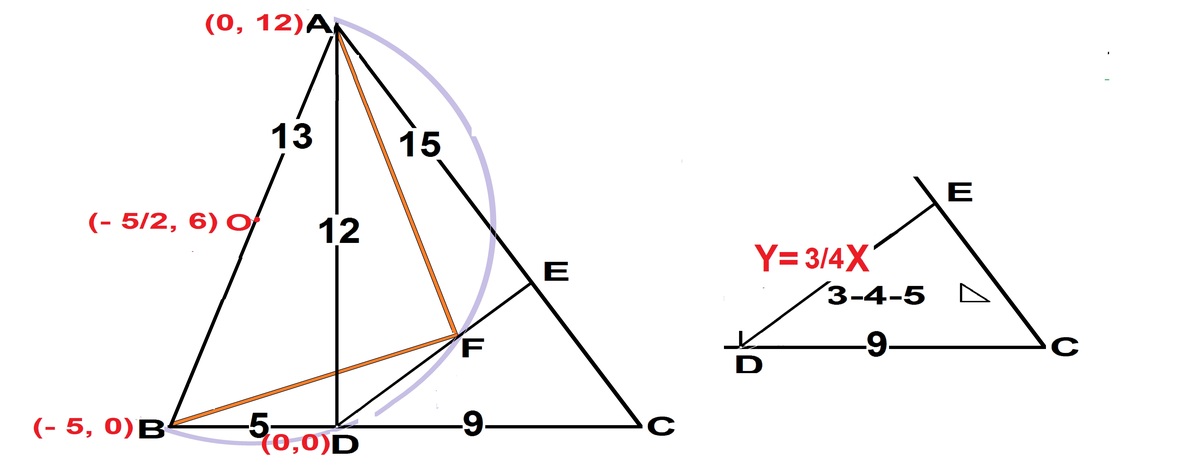A Lot of Methods
In triangle A B C , A B = 1 3 , B C = 1 4 , and C A = 1 5 . Distinct points D , E , and F lie on segments B C , C A , and D E , respectively, such that A D ⊥ B C , D E ⊥ A C , and A F ⊥ B F . The length of segment D F can be written as n m , where m and n are relatively prime positive integers. What is m + n ?
This section requires Javascript.
You are seeing this because something didn't load right. We suggest you, (a) try
refreshing the page, (b) enabling javascript if it is disabled on your browser and,
finally, (c)
loading the
non-javascript version of this page
. We're sorry about the hassle.
2 solutions
Can you please explain how you got the last line? Thanks.
Can you please explain how you got all the lengths except AB which is given ? How it implies FE=4, and DF=16/5 ? Thank you.

Δ A B C i s m a d e u p o f t w o r t . ∠ e d Δ s A D B a n d A D C , w h e r e A D = 5 , a n d D C = 9 , a n d A D = 1 2 . S i n c e A B i s t h e h y p o t e n u s e o f t w o r t ∠ e d Δ s ADB and AFB, it is the diameter of a circle. O, the midpoint of AB is the center and radius = 2 1 3 . DE is the altitude of the 3-4-5 rt ∠ e Δ A D C . S o T a n E D C = 4 3 . Let A(0,12), B(- 5,0), D(0,0) be on x-y plain. ∴ 0 ( − 2 5 , 6 ) . F = t h e c i r c l e ∩ D E . ⟹ ( X + 2 5 ) 2 + ( Y − 6 ) 2 = { 2 1 3 } 2 ∩ Y = 4 3 X . S o l v i n g , w e g e t F ( 0 , 0 ) 0 R F ( 2 5 6 4 , 2 5 4 8 ) . S i n c e D ( 0 , 0 ) , F ( 2 5 6 4 , 2 5 4 8 ) . ∴ D F = 5 1 6 = n m . S o m + n = 2 1
AE =AD²/AC =144/15= 48/5. BDFA is concyclic then angle ABD= angle AFE and thus AD/BD =AE/FE or 12/5 = (48/5)/FE which gives FE =4. Moreover, 15(DE)=(12)(9) or DE =36/5 and therefore DF =36/5 - 4 = 16/5. Hence etc. (Incidentally, I pressed 27 by mistake but that's another matter)
Since ∠ A F B = ∠ A D B , this implies A F D B is cyclic which implies that ∠ A B F = ∠ A D E which implies that △ A B F ≡ ∠ A D E . This implies that A B A D = A F A E which implies that F E = 4 ⟹ D F = 5 1 6 .